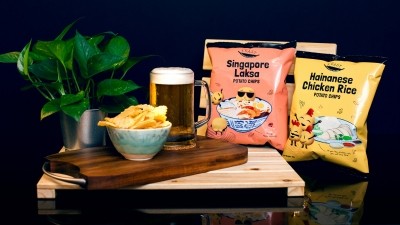China crisis: Foreign food brands forced to innovate to avoid losing share in tough market

The growing success of local names have seen international fast food, soft drinks and infant formula companies lose their market share, the latest edition of a major annual retail trends report reveals.
“Local competition is now extremely high on the agenda of foreign firms in China," said Bruno Lannes, a Shanghai-based partner with consultancy Bain & Co, which with researcher Kantar Worldpanel analysed competition in several fast-moving goods markets for its 2018 edition.
With a focus on packaged food and beverages, as well as personal care and home care, the research looked at 24 categories to form a comprehensive view of the market last year.
Competing with local brands
“In order to win in China now they need to beat not just traditional competitors, but they need to win against local companies that are faster and more innovative than they had realised,” he added.
Local brands grew by 7.7% in 2017, capturing 98% of market growth, while foreign brands increased by just 0.4%. Local brands won share over foreign brands in 21 categories while foreign brands gained share in only four.
“There are many reasons for the success of local brands,” said Martin Guo of Kantar Worldpanel. “They have a better understanding of local demand and are faster at making and executing decisions. This allows them to adapt quickly to new trends. Also, they benefit from a higher historical penetration in the lower-tier cities, where premiumisation has started to take off.”
Innovation and online
While local brands remain strong, some multinationals are taking steps to improve their performance. Among their strategies is to focus more on faster innovations and serving younger consumers shopping online.
“Brands can invest to capture the steady growth of online sales. In the food and beverage categories, they can follow consumers into alternative channels, such as restaurants and tea and coffee shops, which are expanding with O2O [online-to-offline] delivery platforms,” the report said.
As was the case in the 2017 edition of the report, food brands are catering to consumers' changing needs by upgrading their products for better taste or enjoyment, and are being rewarded for their efforts.
For instance, leading instant noodle manufacturers Master Kong and Uni-President have been targeting middle-class consumers by ramping their new premium product variations that have more ingredients and nutritional elements, and fewer food additives.
The same is playing out in biscuits, which rebounded last year with 4% value growth, though the category's 4.7% average selling price growth offset a negative 0.6% volume decline as consumers look for more healthier options.
“The category owes some of its recovery to marketing innovations intended to engage younger consumers, such as the use of the cartoon character Peppa Pig to sell biscuits. Another reason for premiumisation in biscuits: the rise in online sales of imported products such as Nabati,” the report said.
Other categories
Companies are hoping to translate this success to sluggish categories such as candy, where UHA Cororo, a Japanese brand, has introduced an innovative jelly candy that is injected with juice and has enjoyed rapid growth in the last two years.
Beverages continued to grow at a lower rate than food categories, however, with value growth only rising slightly — 2.3% in 2016 to 2.6% in 2017. Yet within this sector, healthy categories such as yoghurt and packaged water maintained their ability to outpace categories considered less healthy.
Yet yoghurt's popularity has attracted many new local producers into the market, intensifying competition and dragging down average selling price growth. The popularity of yoghurt also had a negative effect on the sale of milk, which is viewed as being less tasty and nutritious.
Packaged water maintained its popularity in 2017, but its growth was hurt by competition from products like soda water. Some brands found ways to outperform, however, like Nongfu Shanquan, which achieved 22% value growth from an effective marketing campaign linking water to specific occasions such as cooking rice.
Unexpected beverage categories saw growth too. Carbonated soft drinks, which had been losing steam in recent years, recovered with 6.3% value growth, thanks to new healthy concepts and product lines that boosted average selling prices by 4.2%.
Watson's and Mingren promoted the health-related features of their soda water products by emphasising their zero-sugar content and the benefit of keeping body acid and alkaline in balance.
Coca-Cola introduced Sprite Zero, as well as new Coke flavours such as Sakura and Cherry and smaller packages and sleek cans. The American major also personalises product packages each summer “to increase consumers' emotional connection with the brand”.


















